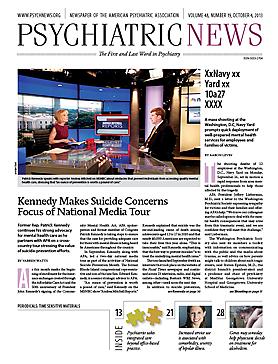The chapter on obsessive-compulsive and related disorders is new in DSM-5 and reflects the increasing evidence of these disorders’ relatedness to one another in terms of a range of diagnostic validators as well as the clinical utility of grouping these disorders in the same chapter. New disorders include hoarding disorder, excoriation (skin picking) disorder, substance/medication-induced obsessive-compulsive and related disorder, and obsessive-compulsive and related disorder due to another medical condition.
The “insight” specifier for obsessive-compulsive disorder has been refined in DSM-5 to allow a distinction between individuals with good or fair insight, poor insight, and “absent insight/delusional” obsessive-compulsive disorder beliefs (that is, complete conviction that obsessive-compulsive disorder beliefs are true). For body dysmorphic disorder, an additional diagnostic criterion describing repetitive behaviors or mental acts in response to preoccupations with perceived defects or flaws in physical appearance has been added to DSM-5, consistent with data indicating the prevalence and importance of this symptom. There is evidence for the diagnostic validity and clinical utility of a separate diagnosis of hoarding disorder, which reflects persistent difficulty discarding or parting with possessions due to a perceived need to save the items and distress associated with discarding them. Individuals with excoriation (skin picking) disorder present with recurrent picking of their skin, which results in skin lesions, and repeated attempts to decrease or stop skin picking. In DSM-5, other specified obsessive-compulsive and related disorder and unspecified obsessive-compulsive and related disorder diagnoses include conditions such as body-focused repetitive behavior disorder, olfactory reference syndrome, and obsessional jealousy.
The questions below are from
DSM-5 Self-Exam Questions: Test Questions for the Diagnostic Criteria, which may be preordered from American Psychiatric Publishing at
http://www.appi.org/SearchCenter/Pages/SearchDetail.aspx?ItemId=62467. The answers and rationales are posted at
http://www.psychnews.org/pdfs/DSM-5_Self_Examination_QandA_13.pdf. The book, available in January 2014, contains 500 questions for all the categories of psychiatric disorders and includes Section III. The questions were developed under the leadership of Philip Muskin, M.D., a professor of clinical psychiatry at Columbia University College of Physicians and Surgeons. APA members may purchase the book at a discount.
1. A 52-year-old man presents to a psychiatrist on the advice of his primary care doctor with raw, chafed hands. He reports that he washes at least four hours a day, using abrasive cleansers and scalding hot water. Although he admits his hands are uncomfortable, he is entirely convinced that unless he washes in this manner, he will become gravely ill. Outside of his hands, a medical workup is unrevealing, and he takes no medications. Which of the following is the most appropriate diagnosis for this man?
a) delusional disorder, somatic typeb) illness anxiety disorderc) obsessive-compulsive disorder with absent insightd) obsessive-compulsive personality disordere) generalized anxiety disorder
2. A 19-year-old woman is referred to a psychiatrist by her internist after she admits to him that she repetitively pulls at her eyebrows to the point that she has scarring and has little or no eyebrow hair. She confides that her normal eyebrows look repulsive to her: she sees them as too bushy, saying that she “looks like a caveman.” Pictures of her prior to the hair pulling show a normal looking teenager. Which of the following is the most likely diagnosis?
a) hair pulling disorder (trichotillomania)b) body dysmorphic disorderc) delusional disorder, somatic typed) normal age appropriate appearance concernse) obsessive-compulsive disorder
3. A 55-year-old retail worker is frequently unavailable at work to the point where he is in danger of losing his job. He explains that he has “chronic halitosis” and fears that his bad breath is “scaring away shoppers.” His coworkers regularly reassure him that his breath is fine. He believes they are being polite, and he brings a toothbrush and toothpaste to work and is frequently in the restroom brushing his teeth. In addition he chews mint gum, although his employer has asked him not to. Although he is worried about losing his job, he finds his worries about his breath to be intolerable. He has seen his doctor and dentist; however, both tell him that he is healthy and does not have malodorous breath. Which of the following would be the most appropriate diagnosis?
a) social anxiety disorderb) obsessive-compulsive disorderc) body dysmorphic disorderd) unspecified obsessive-compulsive or related disordere) illness anxiety syndrome ■
